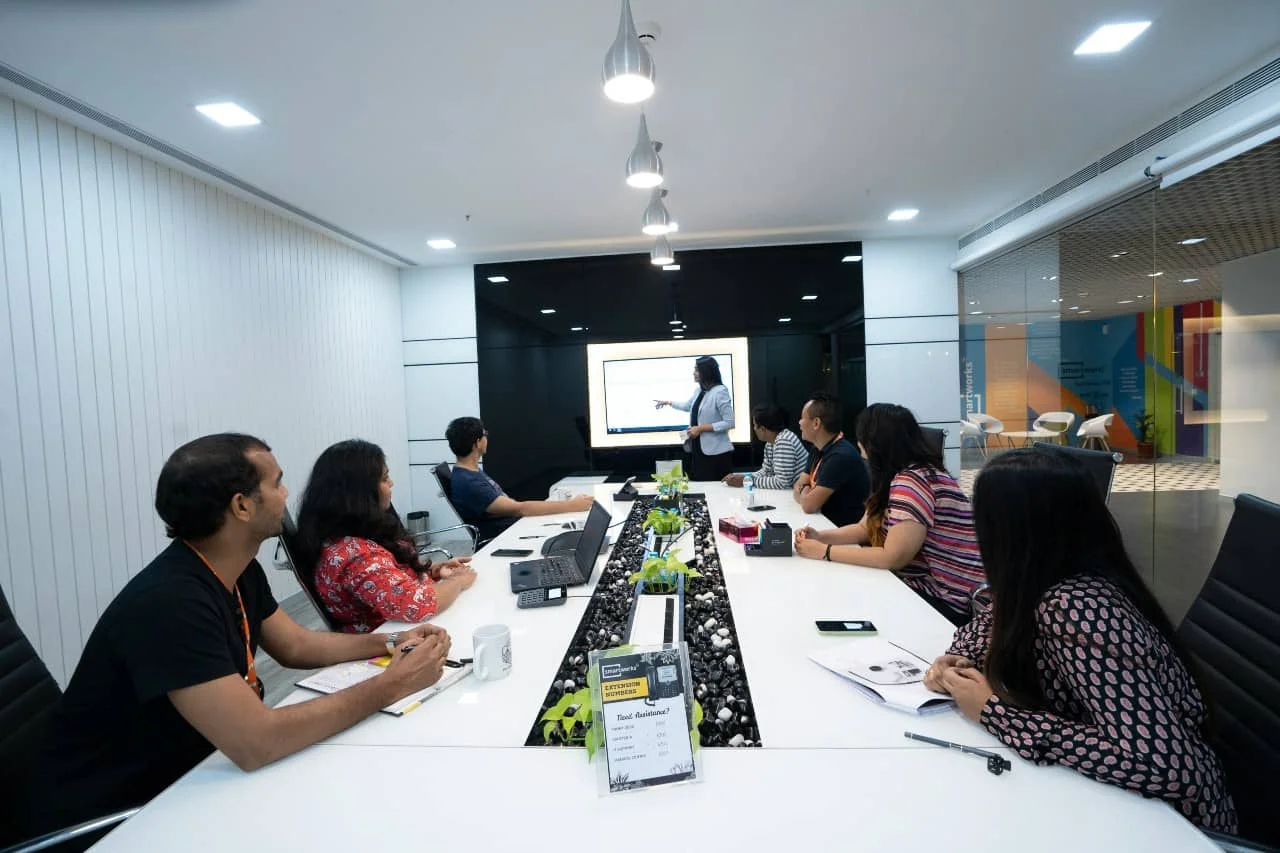The 28 Most Important Leadership Competencies to Master
Leadership skills are essential for individual success. However - not all
leaders and companies leaders are created equal. Successful companies require
great leaders and great leaders possess a unique set of skills that sets them
apart from the rest.
If you’re a CEO or an HR leader looking to improve the leadership abilities in
your organization, or you yourself are looking for ways to become an even more
effective leader, it’s critical to understand what these key leadership competencies are and how to develop them.
The philosophy and practice of effective leadership is a layered, segmented,
and complex concept including cognitive skills, interpersonal skills, business
skills, and strategic skills.
Through leadership development programs, assessments, benchmarking, training, and measurement current leaders and high potentials have the ability to become great.
In this article, we’ll discuss the 28 most important leadership competencies
that every leader must master in order to thrive in any business, industry,
and organizational culture.
What are Leadership Competencies?
Leadership competencies aka “leadership skills” are the fundamental skills
that are vital to lead others in an organization successfully. Leadership
competencies such as emotional intelligence, confidence, delegation, and every
important aspect of interpersonal relationships in the work environment.
How these abilities are used can depend on circumstances such as role and
level of authority.
The most successful leaders grow their leadership competencies as they grow in
terms of role, complexities, and challenges and are constantly growing,
adapting and evolving in different environments.
When broken down and analyzed effective leaders are competent in the four
areas of leadership:
- Leading self
- Leading others
- Leading the organization
- Leading implementation
Within these four categories, there are 28 crucial leadership competencies
that are core to any leadership development program.
Improving Leadership Skills is a Crucial Part of Organizational Success
Leadership competencies are essential to organizational success for a number
of reasons.
First, good leaders can steer their organizations in the right direction and
help them reach their goals.
Second, strong leadership can create a positive work culture that is
motivating and encourages employees to do their best.
Finally, effective leadership can make an organization more agile and
responsive to changes in the market or environment such as turnover, talent
pipeline, and smooth transition of generational leadership.
These leadership skills are critical for any organization looking to be
successful.
Why is Leadership Development Important?
Maintaining strong leadership bench and developing high potentials to be ready as the next generation of leaders is absolutely essential to continue high-performance organizations’ success.
Great leaders inspire and motivate employees, set the tone for the workplace, make critical decisions that impact the company, and help to achieve team & company goals faster.
The competition amongst a-list organizations for this top-tier talent is
fierce. Not only is there a fight for current senior leaders, but for high
potentials as well.
Companies need to invest in leadership development programs and provide
options for current and aspiring leaders to develop their leadership competencies.
The main goal of any leadership development investment should be to accelerate
leaders learning trajectory.
Effective leadership development saves time and money by helping leaders
develop critical skills faster to accelerate performance and avoid costly
mistakes.
What are the Key Leadership Competencies Needed to Enrich Careers,
Companies & Ensure Success?
While some teach 3, 6, 7, or even 12 core leadership competencies, our program
C4L focuses on research. The research shows that every leader should master 28
core leadership skills and competencies distributed across four categories:
- Leading Self
- Leading Others
- Leading the Organization
- Leading Implementation
Within each, there are several subcategories that effective leadership
requires. Business skills, business strategy, and more are targeted by the
specific categories of proficiency. This competency model is the golden
standard. This is reflected in its ubiquitous use by all serious corporations
and government organizations, including the USDA and
the Coast Guard.
Leading Self
These are the leadership skills that surround the leader’s soft skills. They
surround social intelligence and the underlying ability to apply leadership
while handling their own emotions.
Emotional Control
Emotional control is about emotional intelligence and leadership presence. For
a leader to be respected, they must maintain a respectful and professional
demeanor. This includes situations that are highly stressful.
Flexibility
Flexibility is about being open to changes. As a matter of skill development,
it means learning how to adapt quickly to sudden changes, poor conditions, and
all kinds of unexpected difficulties. This is key because leadership is tested
under pressure, which an effective leader will certainly experience at some
point.
Integrity
Integrity is about emotional intelligence, building trust, and issues such as
only agreeing to commitments that can be followed through on. Understanding
ethics and fairness falls under this category.
Resilience
Another one of the skills that are key when leaders are under pressure.
Resilience is about maintaining focus, emotional strength, and leadership
position under pressure or during significant changes.
Self Confidence
This specifically focuses on showing confidence in your leadership without
appearing arrogant.
Executive Presence
Executive presence describes the authenticity, leadership brand, and
organizational competency of a good leader. Leaders are taught to behave in a
way that commands respect.
Work-life Balance
Leadership positions can naturally lead to a situation where work-life
balances are upset. This “leading self” competency covers maintaining a work-
life balance as a trusted leader.
Leading Others
”Leading others” refers directly to the interpersonal relationships in the
workplace. It is about applying leadership directly. Leaders must sometimes
intervene in interpersonal conflicts, for example. These are the leadership
skill requirements used when handling team members while maintaining an
executive presence.
Assertiveness
Assertiveness in leadership terms is one of the interpersonal skills that will
often be relied on. Leaders must know how to present their views and make
requests directly and openly. They need to be seen with higher perceived
fairness as well, not seeming unfair to any party being led.
Conflict Resolution
People can fall into conflicts for a large number of reasons. Good leaders
must understand conflict resolution. Conflicts must be solved in a positive,
constructive, and professional manner.
Influencing Others
Good leaders get others to buy into their viewpoint and gain consensus. It’s
an important skill that requires social intelligence to gain cooperation
toward organizational goals.
Listening
Leaders must seek to understand the viewpoints of others. By fostering self-
awareness and patience, leaders can maintain professional relationships with
open dialogue and without intimidation.
Partnering & Relationship Building
Interpersonal skills and networking are required of good leaders. This
leadership competency is about collaboration across different functions and
between different departments.
Teamwork
Teamwork is about fostering collaboration and trust between team members. It’s
important for executives as well as human resource management. Its development
will require problem-solving skills and interpersonal skills.
Verbal Communication
Leaders must communicate clearly and keep their audiences engaged. Verbal
communication is a category that covers everything from conflict management to
business skills. This competency is built one-on-one and with audiences of
various sizes, all of whom must be kept engaged.
Leading the Organization
These key leadership competencies include those that are required to meet
business objectives and steer the organization in the right direction. It thus
requires creative leadership development, awareness, and business acumen.
Creativity & Innovation
The competencies that are needed to develop and apply creative solutions.
Entrepreneurship
Showing initiative and taking appropriate risks is part of competency models
that include senior managers. A good leader must know how to take calculated
risks.
External Awareness
A successful leader identifies and keeps up the pace with trends that affect
business performance. Leaders that are engaged in business strategy keep an
eye on economic, political, and social trends.
Organization Awareness
Understanding organizational competency models means having a clear and
realistic understanding of the organization’s realities. It’s one of the
strategic skills employed by competent senior managers.
Service Motivation
This is another one of the strategic skills that focuses on organizational
culture. Leadership is directed at maintaining or improving the quality of
service provided.
Strategic Thinking
Strategic skills are also leadership competencies. Leaders must formulate
strategies with the long-term vision of the organization in mind. For
development purposes, this means instilling long-term thinking.
Leading Implementation
These leadership competencies are those that cover the implementation of
processes at organizational levels.
Coaching & Mentoring
A part of any leader’s job may eventually be identifying and coaching future
leaders. It’s one of the essential leadership competencies for an
organization’s continuity. Promoting leaders requires having leaders
proficient in coaching and mentoring.
Customer Focus
Responding to any form of customer feedback and demonstrating a commitment to
customer satisfaction. This competency focuses on implementing measures aimed
at better customer experiences.
Delegation
Delegating responsibilities is perhaps the competency most readily
recognizable with business leadership. But as a leadership skill, it’s also
about how you identify strengths, trust others, and avoid micromanaging.
Delegation is about trust, encouraging initiative, and autonomy.
Effectiveness
Effectiveness covers how leaders use their position to actively ensure
projects are completed on time and according to budgetary and other
restraints.
Leaders are responsible for accountability and fostering superior performance.
They must hold themselves and others accountable, taking a competency-based
approach to eliminate substandard performance.
Planning & Organizing
Effective leadership involves establishing effective systems. Future business
trends and other challenges are met by leaders who proficiently allocate their
time and resources.
Thoroughness
Leading implementation requires attention to detail. This leadership
competency covers such attention to detail while keeping the big picture in
mind.
Master The Leadership Skills Needed To Succeed
Naturally - each leader is going to be great at certain things and lack
competency in other areas.
The leadership skills strataplex is layered and complex and in order to hone
in and improve a target organization’s leadership competencies, programs must
be tailored to streamline the development of specific, individualized needs,
and based on a leadership development process that requires ongoing learning
experiences based on a quantifiable framework of examination, benchmarking,
assessment, learning, and improvement.
The improvement and mastery of leadership competency is an ongoing and
neverending process, but the payoff is immense once essential leadership
competencies are established leader by leader, across all organizational
levels.
How to Improve Leadership Competencies
Let’s go over the practical steps of instituting a leadership development
initiative with the goal of enhancing the most important leadership
competencies across the leadership team for an entire organization. See below:
Assessments
Leadership development starts with an assessment. The first step to
strengthening leadership and achieving better leadership competencies is to
assess each individual’s starting point.
Every leader has different strengths and weaknesses based on their
personality, experiences, and skillset that influence their leadership
abilities and how these abilities are utilized.
Based on their own personal assessment, leaders will work on developing
leadership competencies based on their own unique needs.
Benchmarking
By completing their leadership assessments, organizational leaders and high
potentials can identify their own strengths, weaknesses, and areas of
opportunity for improvement in a standardized, quantifiable manner.
With a standardized competency model and personalized input, you can then
create a plan to develop each leader’s new leadership competencies training
effectively.
In addition, pre-assessment and benchmarking provide a baseline for post-
program comparison as the individual develops their abilities.
Leadership Development Training
Whether the training program is virtual, classroom or hybrid consider the
individual’s role and responsibilities. Whatever modality of learning is used,
it’s critical that the content is directly linked and can be applied to the
person’s job.
Real learning and long-term impact for the individual occur when the
leadership development program takes place over time, learning can be applied
immediately, and application is further reinforced as part of the development
program.
Leadership Coaching
Leadership coaching and working directly 1 on 1 with a coach allows leaders to reflect on past
decisions, performance, and outcomes and master the competencies needed for
their roles: developing communication, problem-solving, and decision-making
skills.
Our executive coaches can work directly with organizational leaders to help improve their skills and reflect
on company and performance challenges they may be facing.
Measurement
To understand the acceleration and improvement of a leader’s competencies, the
efforts and outcomes need to be measured.
Measuring critical metrics like pre and post-scores of individual leadership
development competencies, and achievement of team or company objectives that
can be linked to leadership development program efficacy is super important
and must be tracked.
Conclusion
In this age of global leadership, large organizations often have more
challenging leadership needs. Issues such as cultural awareness, global
mindsets, and others are increasingly in demand. But the development of these
global leadership competencies requires a foundation in the 28 important
leadership competencies that are the subject of this article.
With a structured leadership development program, your staff
from high potentials to executives to human resource management, gain
the leadership skills they need to enable your organization with a competitive
advantage.
Contact Skyline G for more information on how
to prepare your leaders and company to take on any challenge by accelerating
their leadership development trajectory.





